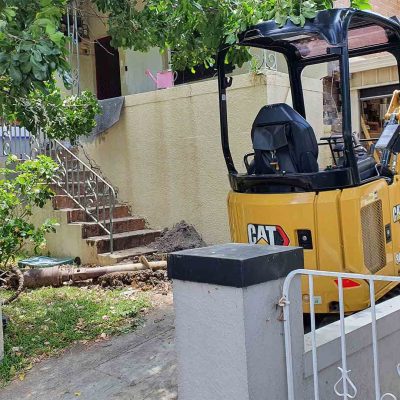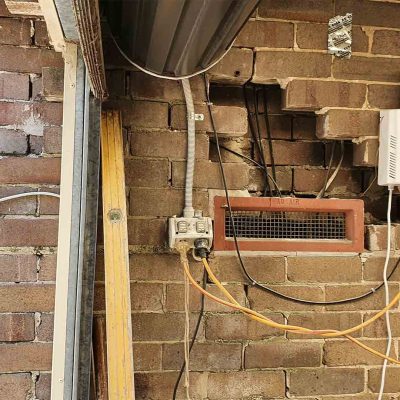Cantilever retaining walls are a common and effective engineering solution for supporting and retaining soil or other materials, especially in situations where a level surface is required on one side and a sloped or uneven surface on the other. These walls are designed to resist the lateral pressure created by the retained materials. To understand the engineering principles behind cantilever retaining walls, we’ll explore their components, structural elements, and design considerations.
Components of a Cantilever Retaining Wall:
A cantilever retaining wall consists of several key components:
- Stem: The vertical portion of the wall that bears the load of the retained materials.
- Base: The horizontal part of the wall, also known as the footing, which supports the stem. The base spreads the load over a larger area to prevent settlement.
- Toe: The forward edge of the base that resists sliding or overturning of the wall.
- Heel: The rear edge of the base that resists tilting or tipping of the wall.
- Backfill: The retained material (soil, rock, or other substances) that exerts lateral pressure on the wall.
Structural Elements:
Cantilever retaining walls rely on the principles of equilibrium, material strength, and proper weight distribution to counteract the forces generated by the retained material. Here’s how these elements come together:
- Lever Arm: A cantilever retaining wall works by creating a lever arm effect. The vertical stem extends above and below the base, with the backfill material creating a lever, allowing the wall to resist lateral pressure.
- Bearing Capacity: The base must be designed to support the load from the stem and the pressure from the backfill. Engineers calculate the bearing capacity of the soil beneath the base to ensure it can handle the required load without excessive settlement.
- Shear and Bending: The stem experiences both shear and bending forces due to the lateral pressure from the backfill. The stem’s thickness, reinforcement, and material strength are designed to withstand these forces.
- Distribution of Load: Proper distribution of load is vital for the stability of a cantilever retaining wall. It relies on the base’s width and the weight of the wall and backfill material to ensure that the wall does not tip, slide, or fail.
Design Considerations:
Cantilever retaining walls must be carefully designed to ensure their stability and longevity. Key design considerations include:
- Wall Height: Taller walls require more substantial structural elements, including a thicker stem and a wider base, to resist the increased lateral pressure.
- Soil Type: The properties of the soil behind the wall, including its cohesion and friction angle, affect the design. Cohesive soils may require additional reinforcement.
- Drainage: Proper drainage is essential to prevent water buildup behind the wall, which can exacerbate lateral pressure. Drainage systems like weep holes and backfill drainage layers are often incorporated.
- Reinforcement: Some cantilever retaining walls require reinforcement, typically in the form of steel bars or geosynthetic materials, to enhance their stability.
- Surcharge Load: Any additional load on top of the backfill, such as buildings, parking lots, or heavy structures, must be considered in the design.
In summary, cantilever retaining walls are a testament to structural engineering, leveraging the principles of equilibrium and material strength to create stable, long-lasting structures. Proper design and construction are essential to ensure that these walls can effectively withstand the lateral pressure from retained materials while providing level surfaces for various applications, including landscaping, infrastructure support, and erosion control.



